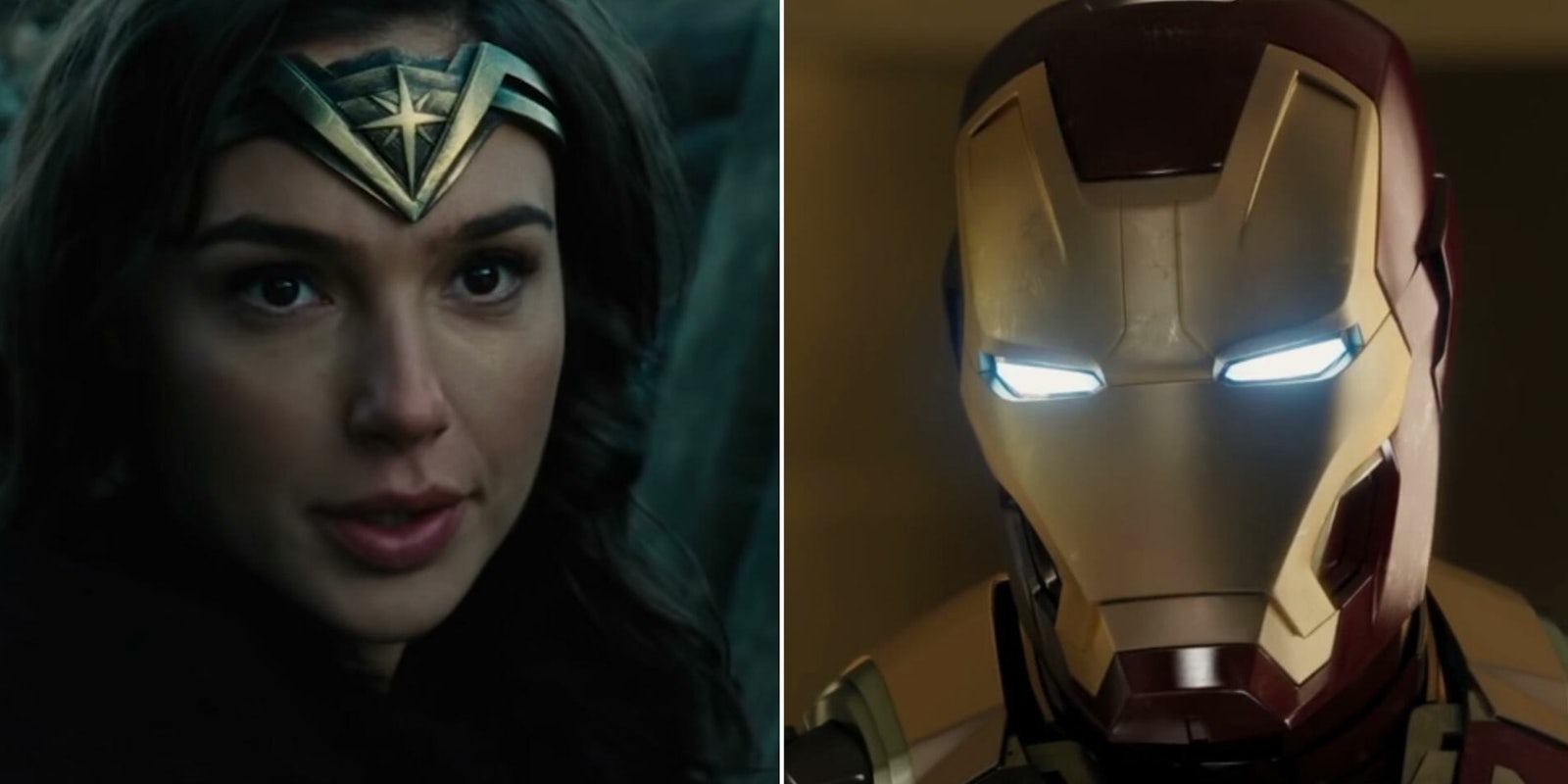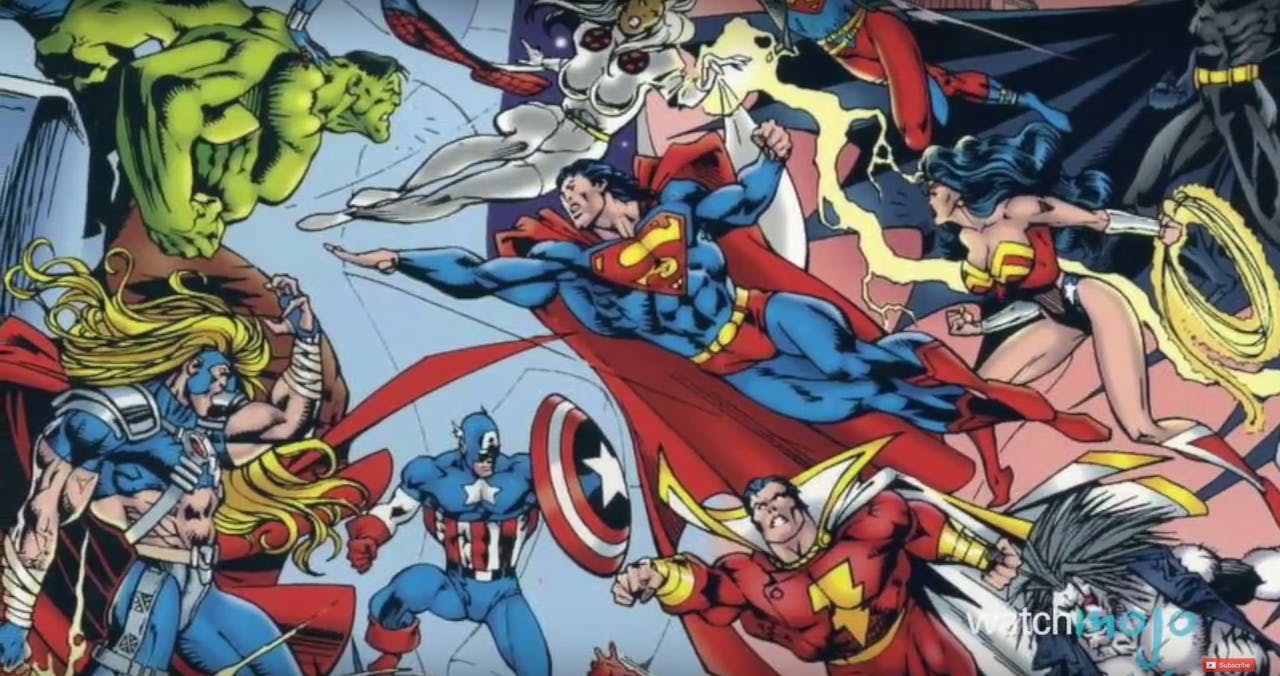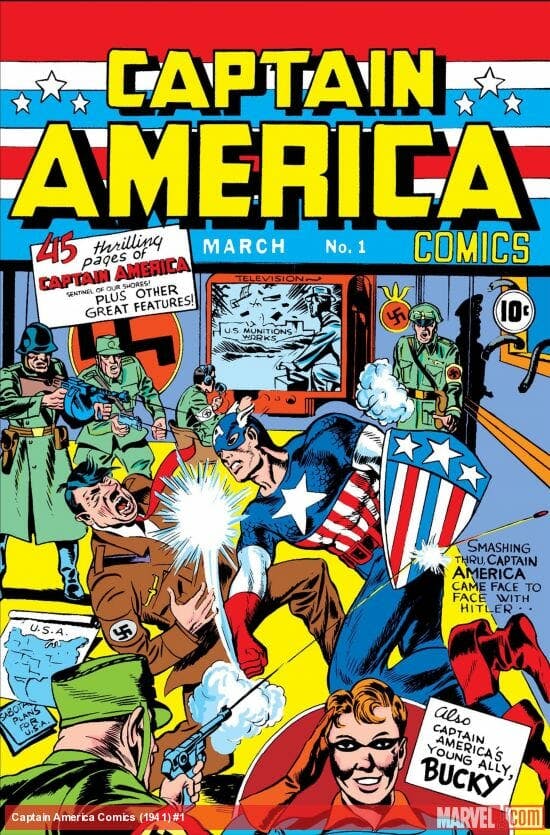When it comes to comics publishing, there are two names that even the most casual fans can identify: It’s Marvel vs DC.
The storied rivalry between the two goes back nearly 80 years when they were known, respectively, as Timely Comics and National Alliance Publications. Fans have very different answers when asked which is superior, and the lack of a clear front-runner is further proof that this debate isn’t going anywhere anytime soon.
Whether you’re firmly on either side of the line, looking to choose a side, or just curious as to where the rivalry even came from, we’re here to help. Here are the key differences in the Marvel vs. DC debate.
WATCH: What’s the Best Order to Binge Every Marvel Movie?
Marvel vs DC comics: 6 major differences
1) Marvel vs DC: Opposing themes
In the beginning, the two publishers showed distinct differences in their storytelling. On one hand, DC was known for telling colorful stories of gods who performed incredible feats to protect humanity and the greater good. Superman was the standard when it came to superheroes, and he was surrounded by other characters with innate godlike abilities—Aquaman, The Flash, Wonder Woman, and more. Batman, a human character, became extraordinary by pushing himself to the limit to keep up with these super-powered peers at every turn.
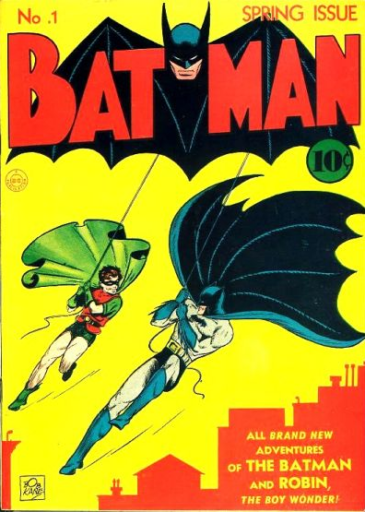
On the other, Marvel was known for having a more human approach. Average Joe characters like Peter Parker were suddenly granted superhuman abilities, while others overcame major flaws to do great things, giving everyday people hope that they too could reach their potential. Tony Stark was a jerk who learned the price of hubris and scientist Bruce Banner had to cope with his destructive alter-ego. Thor was a Norse god, but even his story fits the bill: Odin banishes him to Earth for a lesson in humanity.
As time went on, these lines began to blur. Some speculate that it was the result of the industry evolving in order to survive. Some feel it’s connected to the two publishing houses constantly swapping talent over the years. Either way, you can still find some of the old spirit that differentiated the two back in the day if you look close enough. You’re also just as likely to see plenty of similarities.
READ MORE:
- The complete Marvel Studios movie calendar
- The best order to watch the Marvel Cinematic Universe
- Ranking the best Marvel series on Netflix
2) DC vs Marvel: The copycat effect
They say that imitation is the sincerest form of flattery. If that statement holds true, Marvel and DC have been flattering each other for years.
Whether you’ve realized it or not, many of the most popular comic book characters today are legitimate ripoffs of characters already in existence. Both publishers are guilty of stealing ideas from the other.
This happened for a variety of different reasons. Some were tongue-in-cheek copies made to poke fun at the competing publisher, while others were honest attempts at capitalizing on something that worked. A handful of these instances are so blatant that readers couldn’t believe how bold the moves were, while others are much more subtle.
Don’t believe me? This list from Comicsland sums it up: Deadpool (Marvel) is a blatant spoof of Deathstroke (DC). Doom Patrol (DC) teamed up three months before X-Men (Marvel). Namor (Marvel) hit the oceans three years before Aquaman (DC). Red Tornado (DC) came to life just two months before Vision (Marvel).


There are countless other examples—Elongated Man vs. Mr. Fantastic, Kingpin vs. Tobias Whale, and even Darkseid and Apokolips vs. Thanos.
So which publisher is the worse offender? After all of these examples, it’s safe to say that this use of “inspiration” goes both ways.
3) DC vs Marvel: Comics adaptations
Deciding who was the best in comics used to depend mostly on who wrote and illustrated the best stories. Then those stories started coming to life through television and film, sparking a new whole new debate that continues to this day with every major theatrical release and television series.
Most people would say that Marvel is the clear favorite in this category because of recent box office and critical successes, but it’s worth noting that the MCU was only created 13 years ago. Before that, the victor was much more unclear.
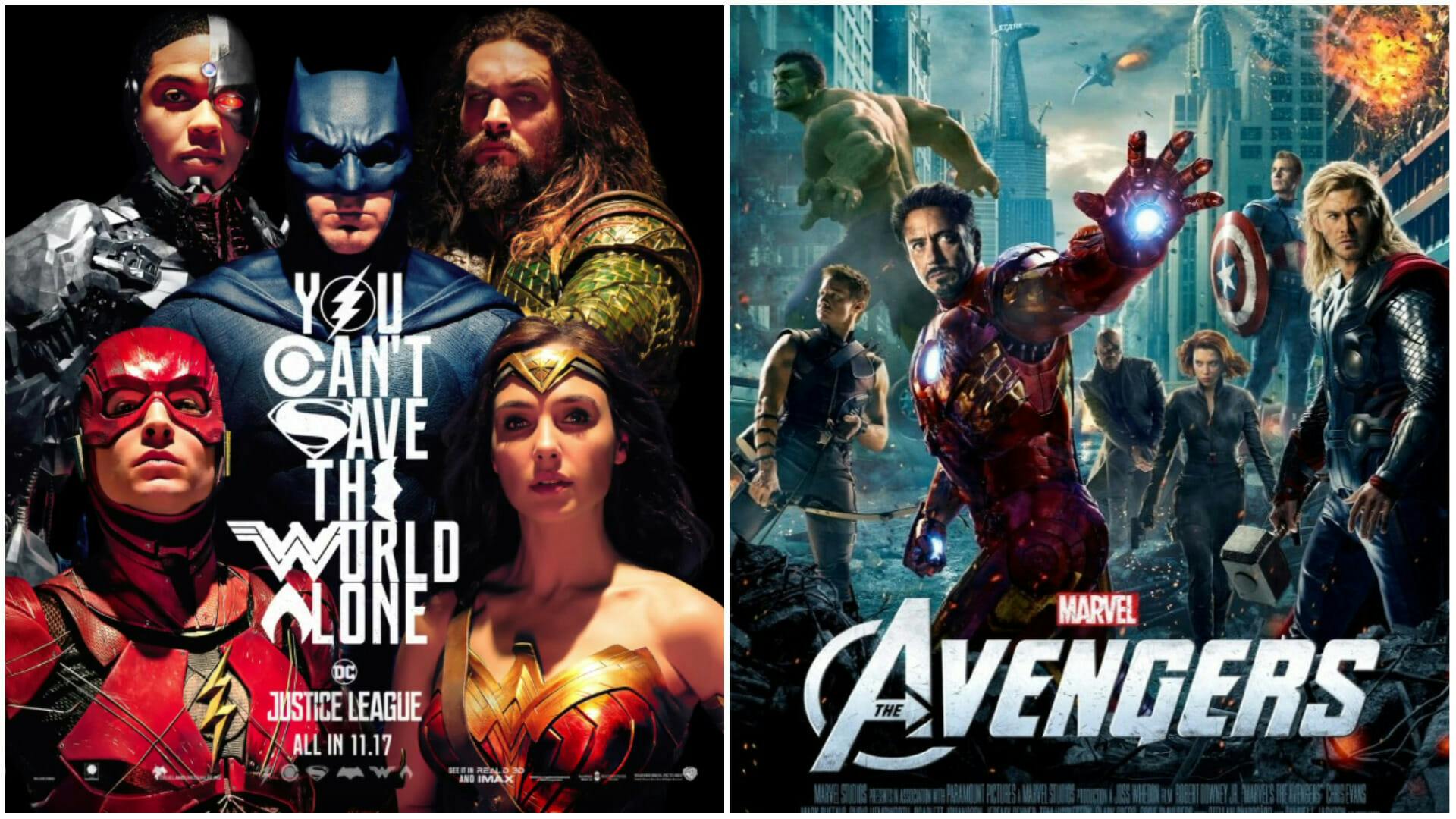
We could spend days merely listing all of DC and Marvel movies, TV shows, animated series, before we get down to the business of who did it better. Instead, let’s turn to the numbers.
According to Rotten Tomatoes, both publishers have their fair share of massive hits and major duds. At the end of the day, they’re in good company with each other.
The average Tomatometer score for DC Comics products comes out to 67.7% while Marvel’s average out to 64.1%. (Rotten Tomatoes calculated the scores based on 130 media properties in November 2017.)
The last decade may heavily favor Marvel’s MCU—especially with recent hits like Black Panther and Thor: Ragnarok. By comparison, Justice League received lackluster reviews. But let’s not forget the pedestal the Dark Knight trilogy still sits on, alongside decades of beloved screen adaptations featuring Superman, Batman, and Wonder Woman.
Marvel may be having its day in the cinematic sun right now, but DC has many years of great film adaptations under its utility belt.
READ MORE:
- The top 20 female superheroes of all time
- Is a Marvel Unlimited subscription worth it?
- How to read comics online
4) Marvel vs DC: Top comics sellers
When you take away the creative differences, friendly jabs, and film adaptations, the DC vs. Marvel rivalry comes down to one very important question: Who sells the most comics?
While comic book heroes are more popular than ever, that hasn’t translated to a boom in the number of issues moving off of comic shop shelves or even through digital retailers.
In 2017, the top-selling single issue was Marvel Legacy #1, which sold just over 300,000 copies. In 1969, that would have just barely cracked into the top 10. Back then, Superman led the group by averaging over half a million in sales, and just three years prior, Batman dominated with an average of 898,000 sales per issue.

This sharp decline in sales is the result of many, many factors—enough to be worthy of a dissertation. But, to cut to the chase, they include advancements in technology, the mishandling of representation in comics (both on the page an in the office), and just a general shift in public consumption of entertainment. But it’s still interesting to watch the numbers and see what they show.
For example, nine years ago, DC Comics didn’t have a single title crack the top 10, while Marvel claimed seven of the top spots. (The remainder went to smaller comics publishers.) But by 2017, DC held six of the top spots, while Marvel Comics took four. Here’s the ranking for single-issue comics (excluding graphic novels) as of the end of 2017 according to Comichron.
- Marvel Legacy #1 (Marvel)
- Dark Nights: Metal #1 (DC)
- Peter Parker: The Spectacular Spider-Man #1 (Marvel)
- Secret Empire #0 (Marvel)
- Secret Empire #1 (Marvel)
- Dark Nights: Metal #3 (DC)
- Dark Nights: Metal #2 (DC)
- Doomsday Clock #2 (DC)
- Dark Nights: Metal #4 (DC)
- Phoenix Resurrection: The Return of Jean Grey #1 (Marvel)
After careful examination, you may be frustrated to find that there still isn’t a clear winner in this age-old rivalry between two publishing giants. When one gains the upper hand, it’s usually temporary. This is how it’s always been—and how it’ll likely be for a while.
5) Marvel vs DC: Box-office comparison
Forget about the new era of Marvel-on-Disney-Plus titles like Wandavision, in the before-COVID times of going to the movies, Marvel had opened up a big lead over DC Comics at the box office. In the past 21 years, according to a Medium data comparison, Marvel has made 2 times more revenue from ticket sales worldwide. Duh, it’s released more films… But Marvel also averages a higher box office per movie, at $687 million vs. $500 million for DC. (Again, this is less about the source material and more about Zack Snyder making bleak, one-note movies for loner teen boys who love Monster Energy drink and buy swords at the mall. Marvel films by contrast are more broadly appealing to, say, said teen’s sister and parents and toddler sibling from a second marriage.)
6) Marvel vs DC: The streaming wars
As the world deals with a crippling pandemic and the shut-in economy rises, a new frontier in the Marvel vs DC debate looms: Your laptop. DC Universe launched in 2018 with an eye on multi-media and as an answer to Marvel Unlimited. Both offer subscription bundles to company content, largely comics. But DC Universe integrated live-action TV series, and both will be waging a war for hearts and minds via the idiot box over the next decade.
As the Daily Dot’s Gavia Baker-Whitelaw wrote in 2019, that could be a problem for DC: “Marvel Unlimited is $9.99/month, and mostly consists of preexisting digital comics—in other words, a low-cost venture for Marvel. Meanwhile DC Universe costs $7.99/month for a similar comics subscription service, plus access to existing TV shows and movies, and new content that’s costing tens of millions of dollars to produce. Warner Bros. allotted $16.9 million for Swamp Thing, with DC Universe also making Doom Patrol, Titans, Stargirl, and several animated shows in-house.
DC Universe has to compete with major streaming platforms like Netflix and Hulu, but only offers access to properties based on DC superheroes. That already puts it several steps behind Disney+, which will launch later this year at $7/month, with new big-budget Marvel and Star Wars shows, along with a catalog of Disney classics.”
Recently, DC Universe threw a revamped product called DC Universe Infinite into the crowded app market that returns its focus to DC’s massive comics inventory. It’s a full-circle move of sorts that ensures the Marvel vs DC blood feud will be with us for some time.

